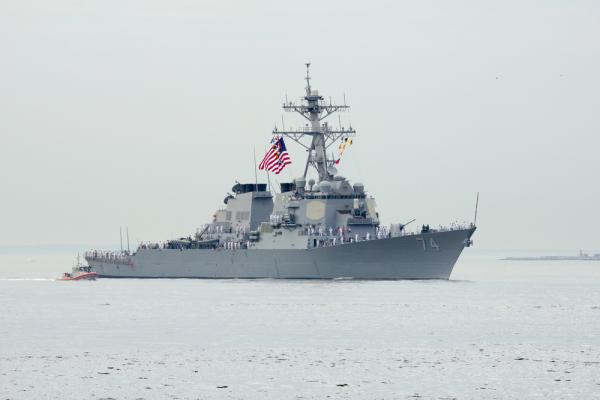To put it mildly, many people are anxiously awaiting the arrival of a new rechargeable battery for portable electronic devices – one that doesn't blow up unexpectedly.
Among them are the millions who purchased cell phones from Samsung – which now hopes it's solved the problem before its next rollout – as well as e-cigarette users whose devices are banned on many commercial airlines.
However, there's another prominent group navigating these same waters, but they're employing a can-do attitude while showing determination to see change. Its officials are not waiting for the electronics industry to deliver a safe, dependable risk-free battery – and they now say they've done it themselves.
That group is the United States Navy.
Spearheading the science is the U.S. Naval Research Laboratory, which announced yesterday it has produced a zinc-based battery that's a safer alternative to the common lithium-ion batteries that have proven to be unreliable, and can combust instantaneously.
"We can now offer an energy-relevant alternative, from drop-in replacements for lithium-ion to new opportunities in portable and wearable power," said Dr. Jeffrey Long, a member of the NRL's Advanced Electrochemical Materials group, in a statement announcing the creation.
 The breakthrough could allow the technology to make its way to all types of products, including researchers say, "manned and unmanned electric vehicles." The NRL's work, titled "Rechargeable nickel–3D zinc batteries: An energy-dense, safer alternative to lithium-ion," was published today in the journal Science.
The breakthrough could allow the technology to make its way to all types of products, including researchers say, "manned and unmanned electric vehicles." The NRL's work, titled "Rechargeable nickel–3D zinc batteries: An energy-dense, safer alternative to lithium-ion," was published today in the journal Science.
Basically, the NRL's discovery takes the standard zinc battery – which is stable, but not rechargeable – and alters its chemistry to allow it to be recharged. With ships and other sea-faring crafts vulnerable because of their isolation on (or under) the water, the Navy has had a strong incentive for at least a decade to develop an safer option to the unstable lithium-ion battery.
In 2008, a huge battery-produced fire and explosion damaged a small submarine in Pearl Harbor designed for Navy Seals. No seamen were aboard during the blaze, but incident lit the fire under naval researchers to find a better alternative, which culminated this week with the Navy's scientific innovation.
"Lithium-ion batteries are problematic because of the organic liquid inside of them, which is flammable if the battery or device gets too hot. A standard alkaline battery, like the AAA in a flashlight, has a much safer water-based electrolyte, which is not flammable," Popular Science explains, noting the differences between the two and the changes made to the alkaline version.
"Those alkaline batteries commonly use zinc as a material in one of the electrodes. In the form it usually takes inside alkaline batteries, zinc doesn’t cooperate with recharging," the magazine continued. "It’s prone to forming dendrites — tiny, problematic spikes. The NRL scientists reconstituted that zinc into another form, which makes the alkaline battery rechargeable without risking dendrite formation."
Despite the discovery, the Navy continues to grapple with problems involving explosive lithium-ion batteries. Just two weeks ago it issued an indefinite ban on e-cigarette use aboard all ships in its fleet after several sailors suffered severe burns and injuries from devices catching fire. The ban takes effect May 14.




